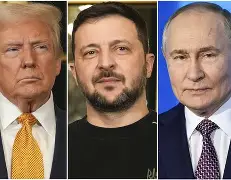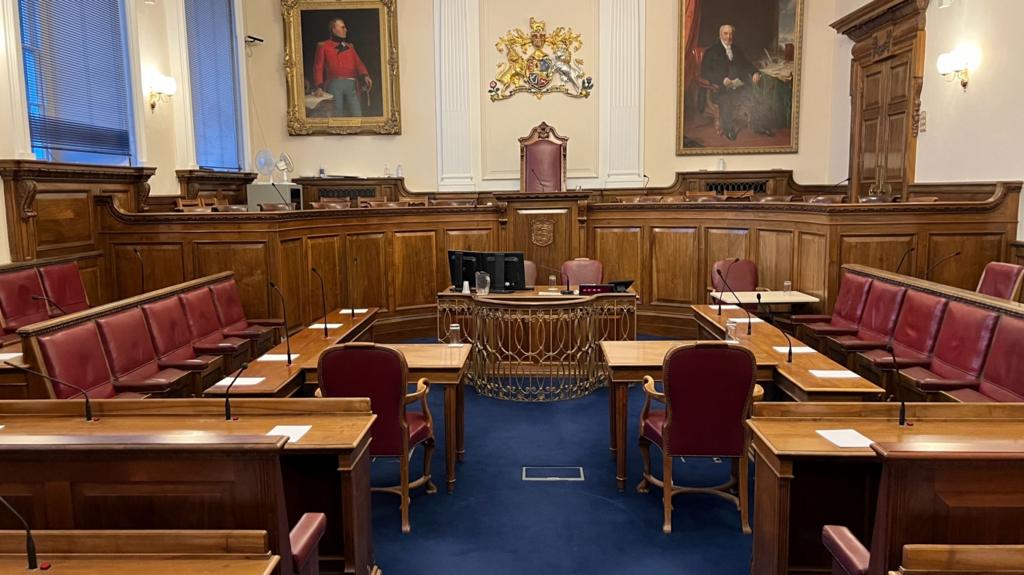Trump Calls Putin to Propose Zelensky Meeting After White House Talks on Ukraine ‘Security Guarantee’
The shifting dynamics of global politics took another unexpected turn when former U.S. President Donald Trump reportedly held direct talks with Russian President Vladimir Putin, suggesting the possibility of a face-to-face meeting with Ukrainian President Volodymyr Zelensky. The move, which follows White House discussions on a potential U.S.-backed “security guarantee” for Ukraine, has ignited debate around international diplomacy, U.S. foreign policy, and the long-term prospects for peace in Eastern Europe.
For supporters, Trump’s maneuver is seen as a bold step toward ending one of the most devastating conflicts of the 21st century. Critics, however, argue that bypassing formal diplomatic channels and engaging directly with Putin risks undermining established processes while signaling divisions in Western strategy. With global attention fixed on the war in Ukraine, this latest development raises more questions than answers about what lies ahead.
This article examines the context, reactions, and potential implications of Trump’s outreach to Putin, the role of the White House’s ongoing Ukraine policy, and whether such a meeting with Zelensky could realistically alter the trajectory of the war.
Background: The Ukraine War and the Search for Security
The war in Ukraine, sparked by Russia’s full-scale invasion in February 2022, has reshaped global security priorities. The U.S. and NATO allies have provided extensive military, financial, and humanitarian aid to Kyiv, while also imposing sweeping sanctions on Moscow.
For Ukraine, the pursuit of a long-term security guarantee—one that goes beyond short-term military aid—remains a top priority. President Zelensky has consistently pushed for assurances that Ukraine will not be abandoned once Western attention wanes. NATO membership has been the ultimate goal, but resistance among some alliance members has left the idea unresolved.
It was in this tense and uncertain context that Trump, seeking to position himself as a central player in the debate, took the unexpected step of calling Putin directly.
Trump’s Proposal: A Meeting with Zelensky
According to reports from individuals close to Trump’s team, the former president proposed the idea of a three-way diplomatic engagement involving himself, Putin, and Zelensky. The concept was framed as a way to cut through bureaucratic delays and push both sides toward a framework for negotiation.
While details remain murky, the key points of Trump’s outreach include:
Direct Dialogue: A call for Zelensky and Putin to meet face-to-face under Trump’s mediation.
Security Guarantees: Linking discussions to the broader U.S.-backed conversation on long-term protections for Ukraine.
The boldness of the move reflects Trump’s longstanding belief in personal diplomacy. During his presidency, he emphasized direct conversations with adversaries—famously meeting North Korean leader Kim Jong-un and frequently communicating with Putin himself.
White House Talks: The Security Guarantee
Trump’s outreach coincides with White House deliberations over what type of security framework the U.S. might be willing to offer Ukraine. Although current President Joe Biden’s administration has not committed to NATO membership for Kyiv, discussions have focused on:
Long-term military aid commitments.
Bilateral security assurances that would deter future Russian aggression.
The Biden administration has emphasized multilateral coordination with European allies, contrasting with Trump’s more unilateral and personalized approach. Nonetheless, the overlap between Trump’s proposal and the White House’s policy debate highlights the central importance of the “security guarantee” issue in shaping Ukraine’s future.
Putin’s Response: Calculated Ambiguity
The Kremlin has not publicly confirmed Trump’s proposal, but Russian officials have signaled openness to any initiative that recognizes Moscow’s concerns. Analysts suggest that Putin views Trump’s outreach as a way to exploit divisions in the West, while also appearing receptive to dialogue.
At the same time, Russia’s official stance remains rigid: recognition of territorial “realities” (meaning Russian control over annexed Ukrainian regions) and an end to Western military support for Kyiv. Whether Trump could persuade Putin to soften these demands is highly questionable.
Zelensky’s Position: Cautious but Reluctant
For President Zelensky, the proposal presents both opportunity and risk. On one hand, any pathway to ending the war that preserves Ukraine’s sovereignty is worth considering. On the other hand, Zelensky has repeatedly stressed that Ukraine will not accept territorial concessions as part of a peace deal.
Additionally, aligning with Trump could strain Kyiv’s vital relationship with the current Biden administration, which continues to provide billions in military and financial aid. Zelensky’s team has therefore responded cautiously, neither embracing nor outright rejecting the idea.
Supporters: A Bold Step Toward Peace
Trump’s supporters have framed his proposal as a game-changer. They argue that:
Traditional diplomacy has failed to produce meaningful results.
Trump’s personal relationship with Putin gives him unique leverage.
A face-to-face meeting could jump-start a negotiation process stalled for years.
The human toll of continued conflict demands unconventional solutions.
Some also see Trump’s move as politically savvy, portraying him as a global statesman capable of ending a war that Biden has struggled to resolve.
Critics: Undermining U.S. Foreign Policy
Critics, however, see Trump’s outreach as reckless and potentially damaging. Key concerns include:
Undermining the White House: By calling Putin directly, Trump risks creating confusion about U.S. policy.
Legitimizing Putin: A high-profile meeting could bolster Putin’s image without requiring concessions.
Marginalizing Allies: Acting outside NATO and EU frameworks could alienate key partners.
Weakening Ukraine: Forcing Zelensky into premature talks might pressure him into accepting a bad deal.
Some U.S. officials have expressed frustration, noting that diplomacy is most effective when coordinated through official channels rather than pursued via personal initiatives.
The Geopolitical Chessboard
Trump’s proposal cannot be viewed in isolation—it is part of a larger geopolitical chess match involving the U.S., NATO, Russia, China, and other global actors.
For the U.S.: The move highlights domestic divisions over how best to approach the war in Ukraine.
For Europe: It raises concerns about whether Washington will remain a reliable partner in supporting Kyiv.
For Russia: It provides an opportunity to exploit Western disunity.
For China: Beijing may view the development as a chance to position itself as a parallel mediator in global conflicts.
Media and Public Reaction
The proposal has sparked a firestorm across media outlets and social platforms.
In the U.S.: Conservative commentators praised Trump’s boldness, while liberal outlets criticized it as self-serving.
In Ukraine: Public opinion is divided, with some citizens eager for peace but wary of losing territory.
In Russia: State media highlighted Trump’s outreach as evidence that Western leaders are beginning to recognize Moscow’s demands.
The Bigger Question: Can Peace Be Achieved This Way?
Ultimately, the key question is whether such a meeting—brokered by Trump, involving Zelensky and Putin—could realistically bring about peace. Historical precedents suggest caution. High-profile meetings often create headlines but rarely resolve deep-rooted conflicts without extensive groundwork.
For any deal to be viable, it must:
Protect Ukraine’s sovereignty and security.
Provide Russia with assurances that address its concerns.
Receive backing from the U.S. and European allies.
Without these conditions, even a groundbreaking meeting may prove symbolic rather than substantive.
Conclusion: A Risky Gamble
Trump’s call to Putin and his proposal for a meeting with Zelensky underscore the unpredictable nature of global diplomacy in the 21st century. Supporters see it as visionary leadership; critics call it reckless freelancing.
What is clear, however, is that the war in Ukraine has become a defining challenge for the international system. The question of security guarantees remains central to Kyiv’s future, and the role of U.S. leadership—whether under Biden or a potential future Trump presidency—will shape the path forward.
In the end, whether this proposal marks the start of a genuine peace process or fades as another political headline depends not just on Trump, Putin, and Zelensky—but on the broader alignment of interests among global powers.
http://Trump Putin Zelensky meeting Ukraine security guarantee talks



